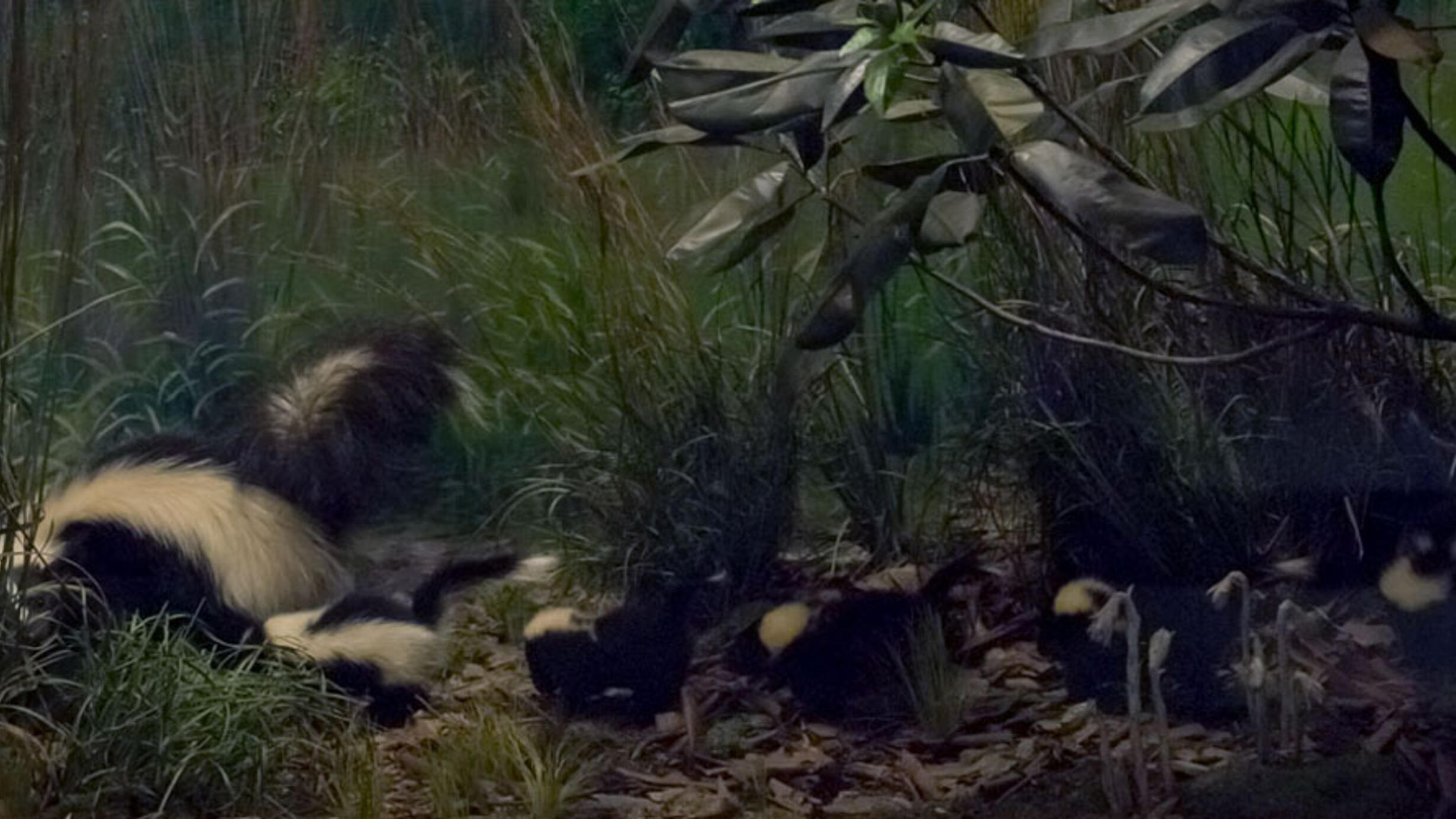Striped Skunk
Part of Hall of North American Mammals.

July at Dusk
Delaware Water Gap, New Jersey
The sun set a half-hour ago—the cue for a mother skunk to lead her five kits from their den on a hunting sortie. The father is nowhere near, as male skunks don’t rear young.
The eight-week-old kits are just learning how to catch and eat solid food—and how to avoid becoming food themselves. Although striped skunks can emit defensive musk at just two weeks old—before their eyes first open—good aim takes practice. Baby skunks tend to spray at any sign of danger, given the great risks at this age. As they mature, their defenses become more strategic.
Skunk Warnings
How Skunks Discourage Predators
Striped skunks are actually reluctant to spray their notorious musk. They’d rather convince predators to steer clear before wasting precious ammunition. Strategic skunks give plenty of warning before they scent.